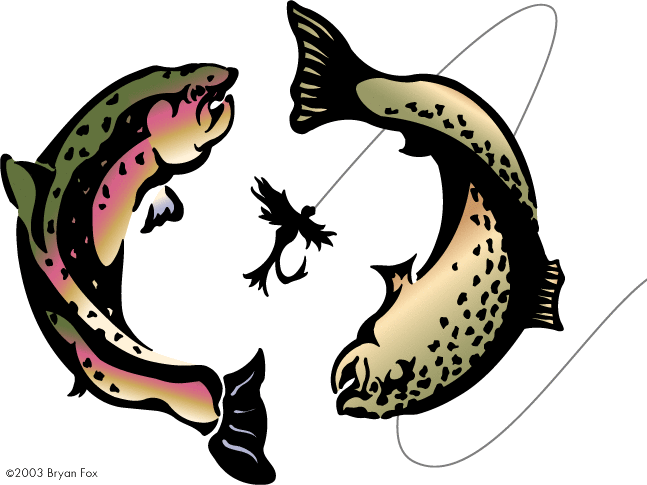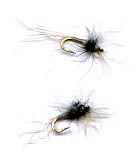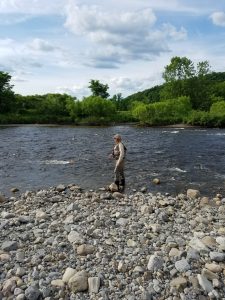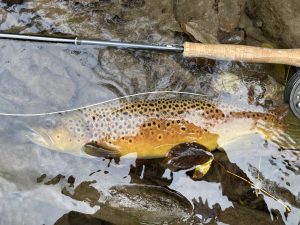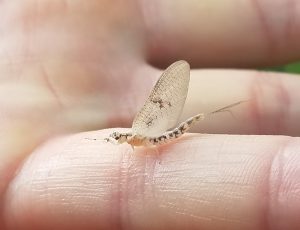Time for Tricos
by Matt Chapple

There are many small streams in Central New York, like the Oriskany Creek that produce excellent hatches of the Tricorythodes or tiny white and black mayfly. The Tricos start to emerge sometime in July when the summer starts to heat up. Look for them as a swarm-cloud over the riffles of the stream, which indicates a strong population. They exist in good numbers in streams with some silt. One of the most beautiful sights of the year is looking up into the morning sun and seeing a cloud of Tricos performing a mating dance over the water. Though they are incredibly small, ranging from size 20 to 26, these tiny mayflies can provide some of the most exciting action of the year. The hatch is usually very reliable. Once the first hatch starts sometime in July, hatches usually occur every morning until the first really hard frost.

Male Tricos, which have an entirely black/dark brown body, emerge overnight and take refuge in the streamside trees and vegetation until the emergence of the female duns. Females have a white abdomen and a black thorax. Emergence of the female duns will occur in the morning anytime from sunrise to 9am depending on the weather. A really hot morning will cause an earlier emergence and colder weather will push the hatch later. From sunrise to emergence fishing a sunken fly is possible, and during the emergence you may elicit some strikes with a dry fly/surface presentation, but the best action comes when the Tricos molt and mate. Some publications have stated that Tricos duns molt into spinners in the air. It is thought now that they must land to molt. Some of them may take flight with the partially molted exoskeleton still attached to the tails. This may give the illusion that the spinners are molting in the air. The spinner fall will happen in a relatively short period of time, sometime from 9am-12pm. After the adults mate and die, there will be countless dead and dying Tricos drifting on the surface of the water , in the film or just below the surface. Because the Tricos are so small, it can look to the un-aware that the fish are rising to nothing! They can feed on the dead spinners for quite a while after all the spinners have dropped as they drift downstream.
A stealth approach is critical to success on smaller central New York streams. The water will most likely be very low and clear. Casting accuracy is also important. Fish spook very easily in the low clear water of summer. The best tackle to use for these small central New York streams is a 3 or 4 weight 7 to 9 foot rod, which will help with a delicate presentation. Cast well above rising fish 10-15 feet if possible in slower water. The stealth of the cast is not as critical if fish are taking spinners in more choppy water of a riffle or head of a pool. Use 7X or 8X tippet, and a leader of at least 10-foot to aid in the stealth of your presentation.
One my favorite flies to fish the trico hatch has been the Trico Hare spinner or dun. It is easy to tie and is very suggestive to trout.
|
Trico Hare Spinner Tying Specifications |
|
| Hook | #20-#22 dry fly(I like straight eye hooks so I have room to thread the tippet) |
| Thread | White 8/0 |
| Tail | Snowshoe Hare Foot under-hair |
| Body | |
| Abdomen | White thread |
| Thorax | Black Beaver Dubbing |
| Wing | Snowshoe Hare Foot under-hair tied flat (spent wings) or upright like a comparadun also works. |
